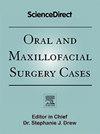The interplay of soft tissue and osseous structures in bifid mandibular condyle: Implications for diagnosis and treatment. Case series and literature review
Q3 Dentistry
引用次数: 0
Abstract
Bifid mandibular condyle (BMC) is a rare developmental or acquired anomaly of the temporomandibular joint (TMJ), characterized by the presence of a duplicated condylar head. Although often asymptomatic and discovered incidentally on imaging, BMC can be associated with TMJ dysfunction, facial asymmetry, and a history of trauma or developmental disturbances. The clinical significance of BMC remains poorly understood, with controversies surrounding its etiology, classification, and management. This article presents a comprehensive literature review on the current understanding of BMC, supported by the presentation of a unique clinical case involving a symptomatic patient diagnosed through advanced imaging modalities. The diagnostic process, clinical presentation, and treatment approach are detailed to highlight the role of thorough evaluation and multidisciplinary management. Our findings suggest that while conservative management remains the mainstay in asymptomatic cases, individualized approaches are essential when functional disturbances are present. Further studies are warranted to clarify long-term outcomes and to standardize diagnostic and therapeutic protocols for BMC within maxillofacial practice.
软组织和骨性结构在下颌髁的相互作用:对诊断和治疗的意义。病例系列和文献回顾
双裂下颌髁(BMC)是一种罕见的发育或获得性颞下颌关节(TMJ)异常,其特征是存在重复的髁头。虽然BMC通常无症状且在影像学上偶然发现,但它可能与颞下颌关节功能障碍、面部不对称、创伤史或发育障碍有关。BMC的临床意义仍然知之甚少,围绕其病因、分类和管理存在争议。本文介绍了一个独特的临床病例,该病例涉及一位通过先进的成像方式诊断出有症状的患者,并对目前对BMC的理解进行了全面的文献回顾。诊断过程,临床表现和治疗方法详细强调全面评估和多学科管理的作用。我们的研究结果表明,虽然保守治疗仍然是无症状病例的主流,但当存在功能障碍时,个性化治疗是必不可少的。进一步的研究是必要的,以澄清长期结果和标准化的诊断和治疗方案BMC在颌面外科实践。
本文章由计算机程序翻译,如有差异,请以英文原文为准。
求助全文
约1分钟内获得全文
求助全文
来源期刊

Oral and Maxillofacial Surgery Cases
Medicine-Otorhinolaryngology
CiteScore
0.60
自引率
0.00%
发文量
43
审稿时长
69 days
期刊介绍:
Oral and Maxillofacial Surgery Cases is a surgical journal dedicated to publishing case reports and case series only which must be original, educational, rare conditions or findings, or clinically interesting to an international audience of surgeons and clinicians. Case series can be prospective or retrospective and examine the outcomes of management or mechanisms in more than one patient. Case reports may include new or modified methodology and treatment, uncommon findings, and mechanisms. All case reports and case series will be peer reviewed for acceptance for publication in the Journal.
 求助内容:
求助内容: 应助结果提醒方式:
应助结果提醒方式:


